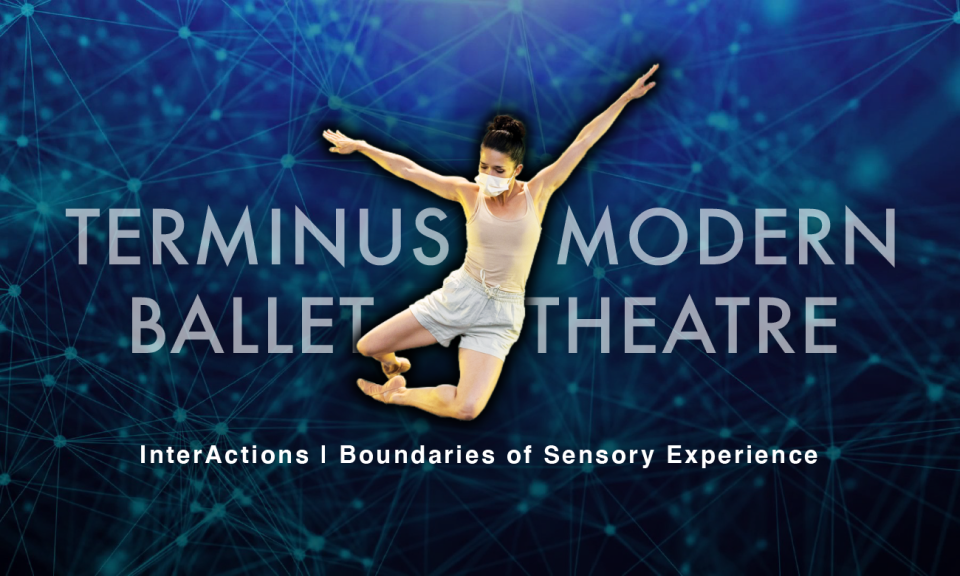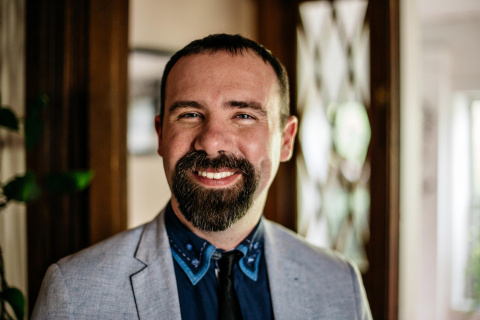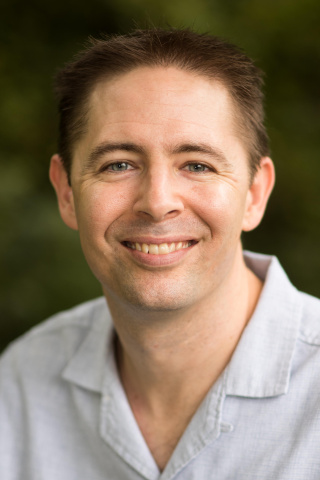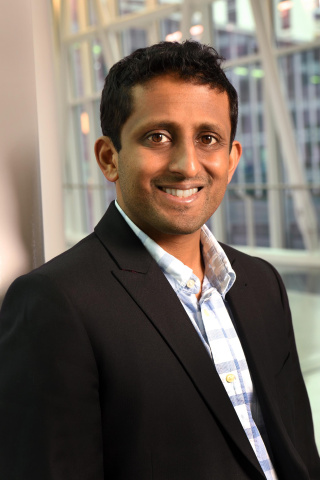AI and Neuroscience to Become Dance Partners for Georgia Tech Arts Event

An unlikely combination will take center stage on campus this Friday, October 1. With assistance from College of Engineering researchers, Georgia Tech Arts and Terminus Ballet Theatre (TMBT) will mix dance with the fields of neuroscience, technology, and artificial intelligence (AI) to create a unique performance. TMBT dancers will perform excerpts of InterActions | Boundaries of Sensory Experience, a work-in-progress that is a physical embodiment of neuroscience and an exploration of the ethics and mechanics of how it’s used in AI technologies.
Georgia Tech researchers have been meeting with the choreographer, Troy Schumacher, and the ballet company for the last year and a half to shape the concept, which explores ideas at the forefront of mechanical interventions into the human body and mind.
“I think the arts can be a really powerful way to bring people from all backgrounds into a conversation about science and technology,” said Chris Rozell, a professor in the School of Electrical and Computer Engineering who has worked on the project since its genesis. “My goal is to facilitate that conversation by helping to translate between the scientists doing amazing work and the artists who are approaching these ideas from the perspective of making something beautiful.”
Georgia Tech Arts and TMBT have dubbed the project the “Grand Neuroethics Challenge.”
“A lot of the concepts, technologies, research, and ethics we've been discussing in this work are extremely complicated, but what's come through for me is that a lot of their work is going to have profound implications for the future of humanity,” said Schumacher. “So, for this ballet, I've decided to focus on the emotional relationship to brain-machine interfaces, while touching on what I've learned so far. I've spent most of my career collaborating with artists with little to no relationship to dance, but nothing quite as complex and fascinating as this.”
Aaron Shackelford, director of Georgia Tech Arts, said the project is a worthwhile endeavor because it offers a case study as to the importance of collaboration between artists and researchers, while demonstrating the importance of the arts in the mission and strategic plan of Georgia Tech.
“We recognize that the arts are critical to championing innovation and creativity at Georgia Tech,” said Shackelford. “Our mission is to develop leaders who advance technology and improve the human condition. The arts — and artists — provide a vital avenue for pursuing this work. This project illuminates the impact of artists and researchers coming together to mutually inspire and learn from each other, while inviting audiences to participate in the discussions about their discoveries.”
“As a director coming from an arts/dance background and facilitator to this project, I have become fascinated with the work of the scientists during the conceiving/creation process and how this gets interwoven into the choreography and dancers’ bodies,” said John Welker, TMBT’s artistic director. “In any collaboration, there are surprises that are part of my joy for discovery, but this particular process has made me so much more aware and appreciative of the intimate connection between our minds' intention and how that is carried out through the movement of our bodies.”
This Friday will be more than a dance performance. It will also include talks from the researchers involved in the project and opportunities for audience to ask questions. Rozell will discuss his work on AI and its applications in treating depression. Chethan Pandarinath, assistant professor in the Wallace H. Coulter Department of Biomedical Engineering at Emory University and Georgia Tech, will talk about his AI research and how the brain controls movement. They’ll be joined by Karen Rommelfanger, director of Emory’s Neuroethics Program.
Rommelfanger knows the field of neuroscience can introduce complex words and concepts. When mixed with dance, however, she sees the project as a powerful opportunity for audiences to engage with multiple modalities of sensation and comprehension.
“I believe neuroscience brings great hope and promise for humanity. But my fear is that the promise of the field will be undermined by a deterioration of trust related to a real and hyped threats of unconsidered ways neuroscience might interface with individuals and society,” said Rommelfanger.” My hope is that this project will invite audiences, including myself, to challenge and surface our unspoken values and assumptions about the brain and technologies that interface with it.”
Friday’s event starts at 8pm at the Ferst Center for the Arts. Tickets are just $10. The full work, which is made possible in part through a grant from the Charles Loridans Foundation, will premiere on campus next fall.
“I’m excited to see how something as abstract as the concepts in neuroscience, neurotechnology, and neuroethics can be translated into dance,” Rozell said. “As a researcher, we can get really caught up in the technical details. I can’t wait to see how those details turn into an overall impression that is both beautiful and gives us a new way to think about what we do.”


